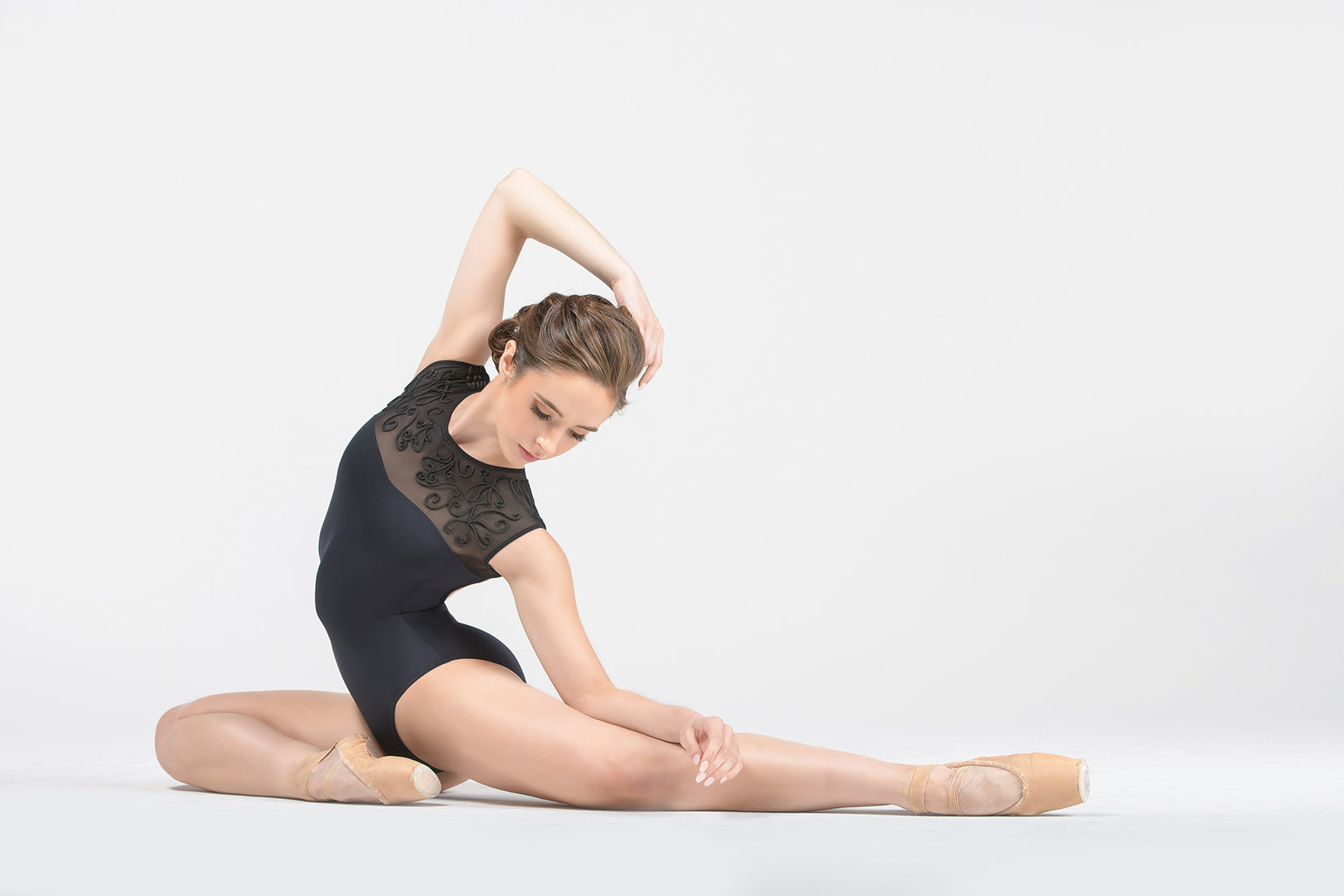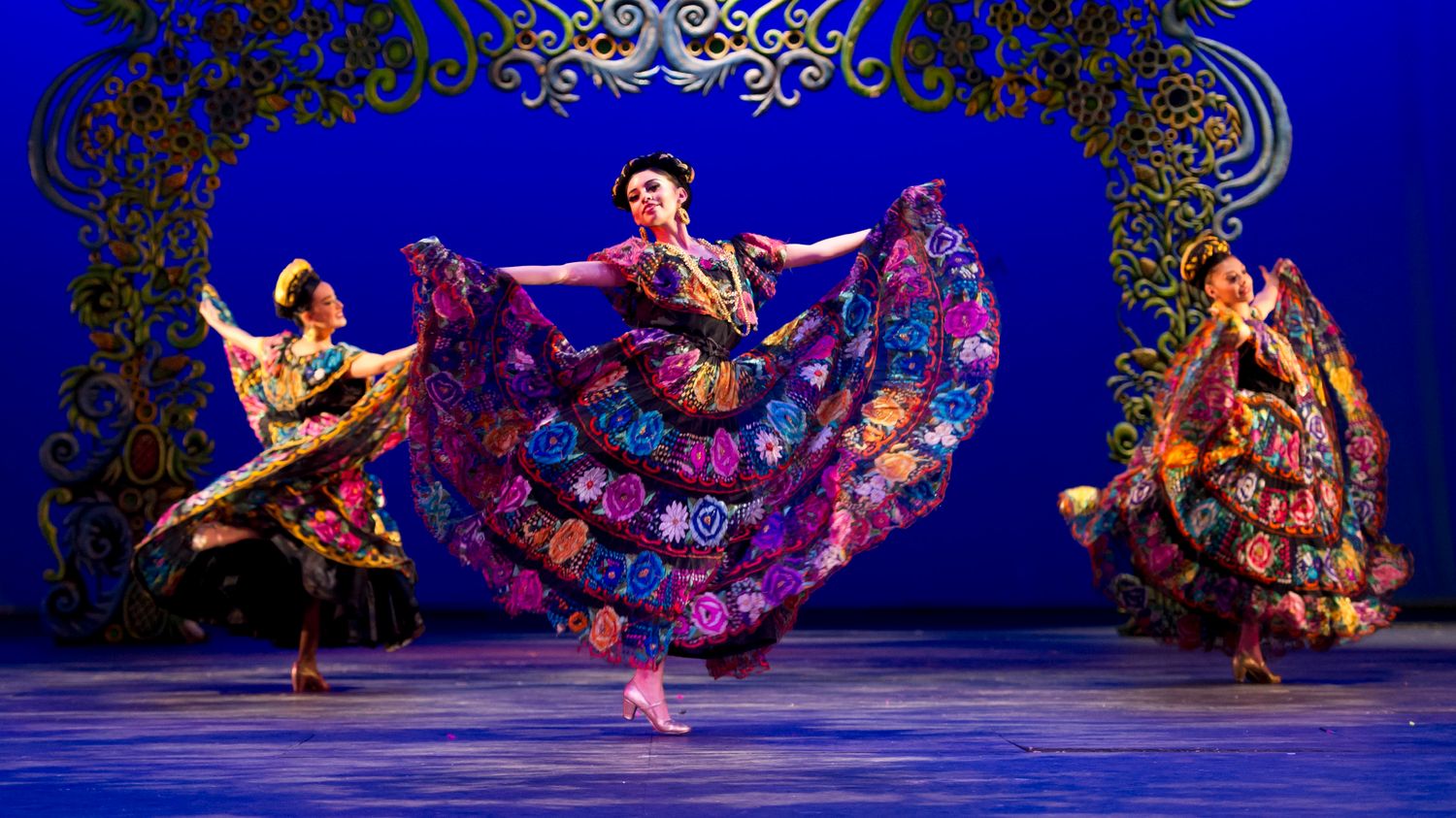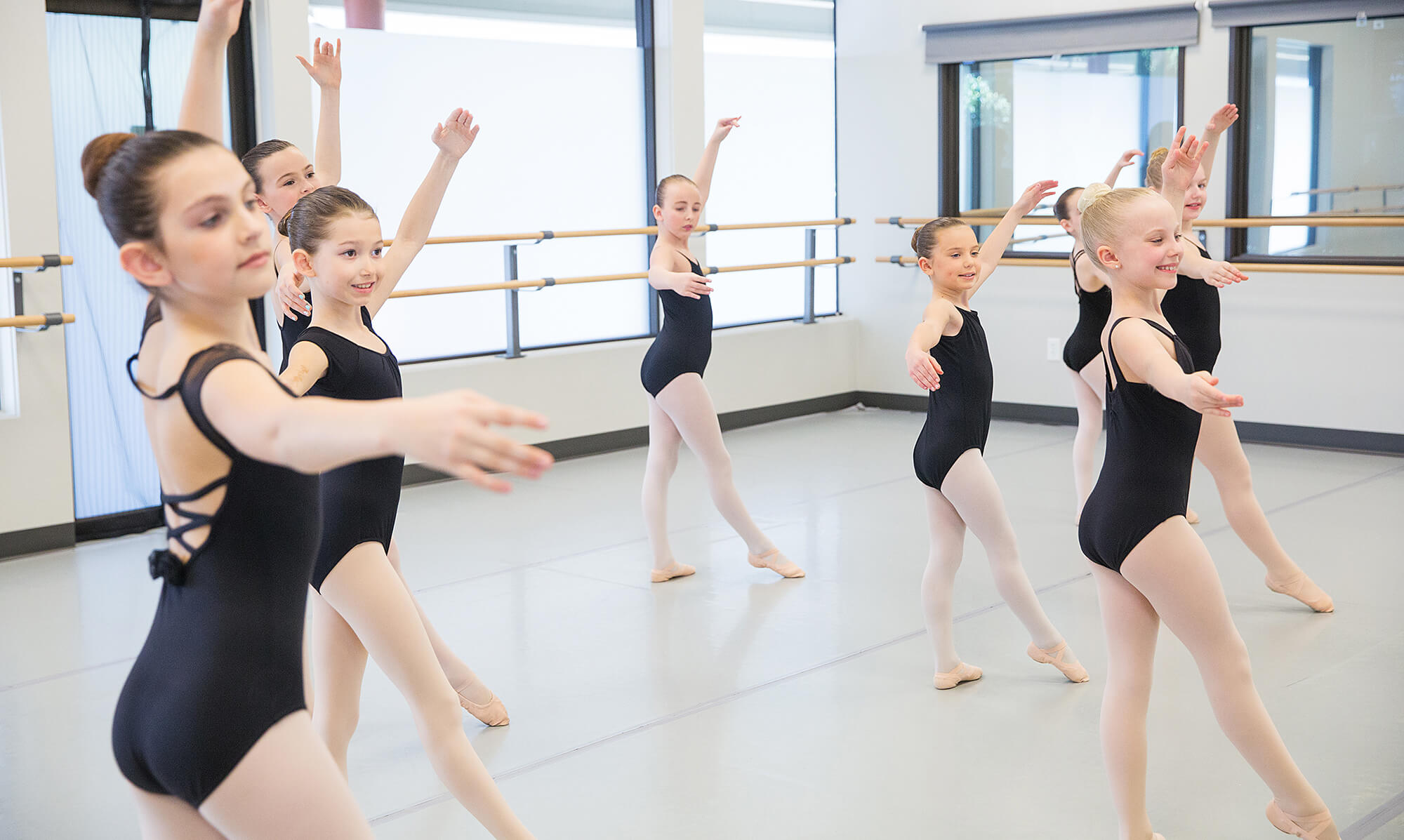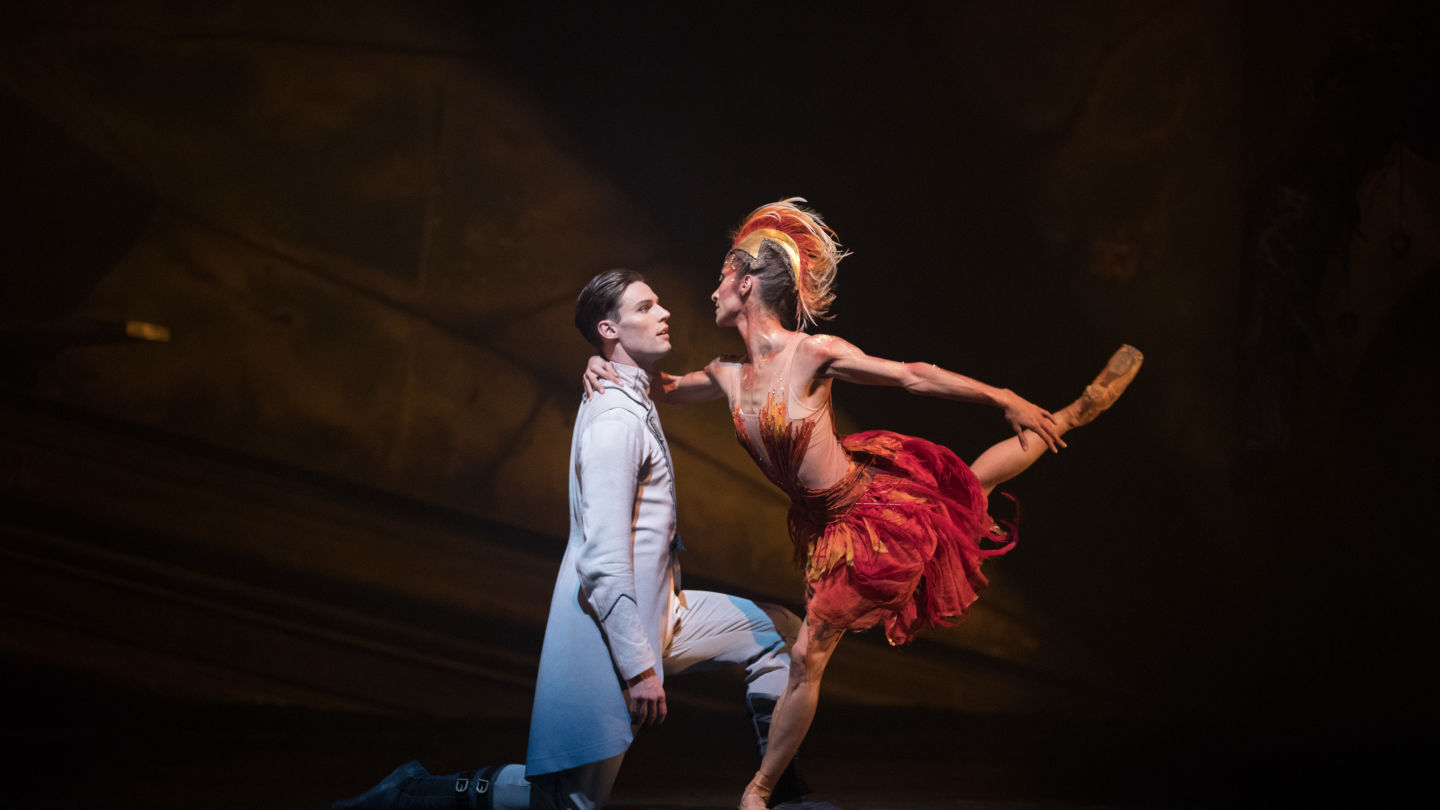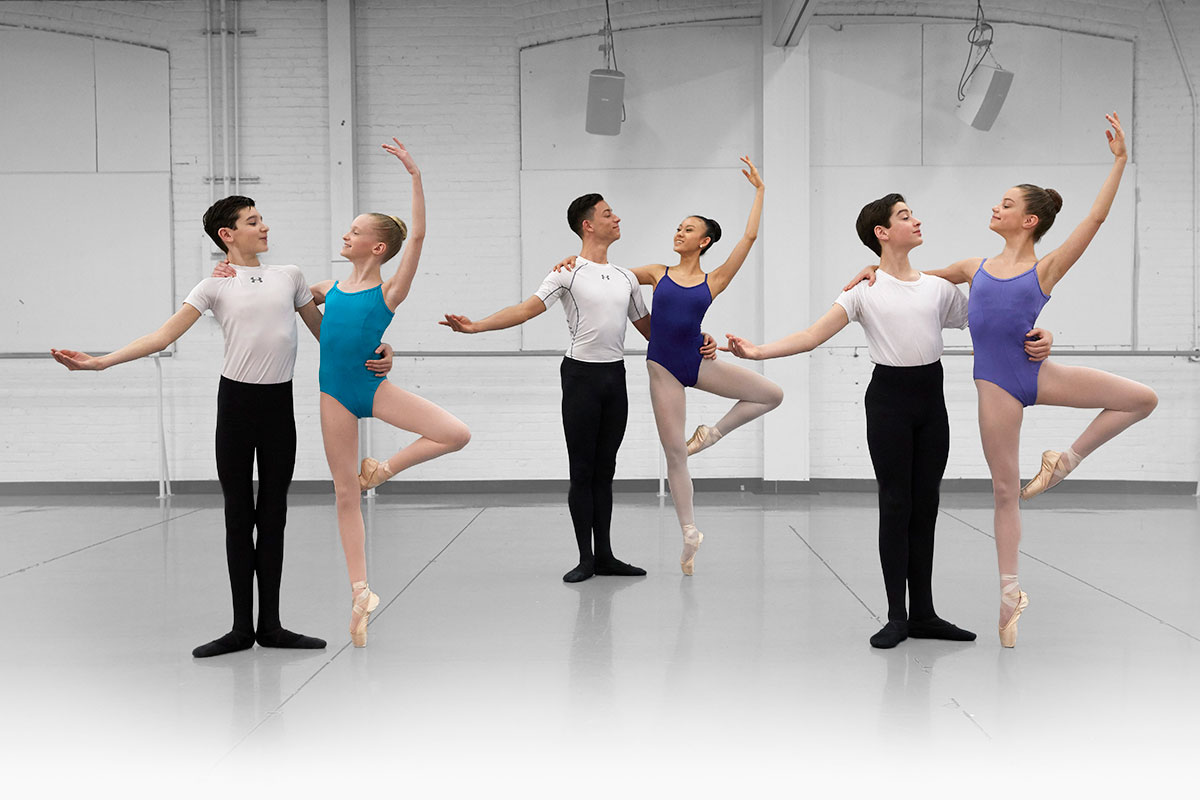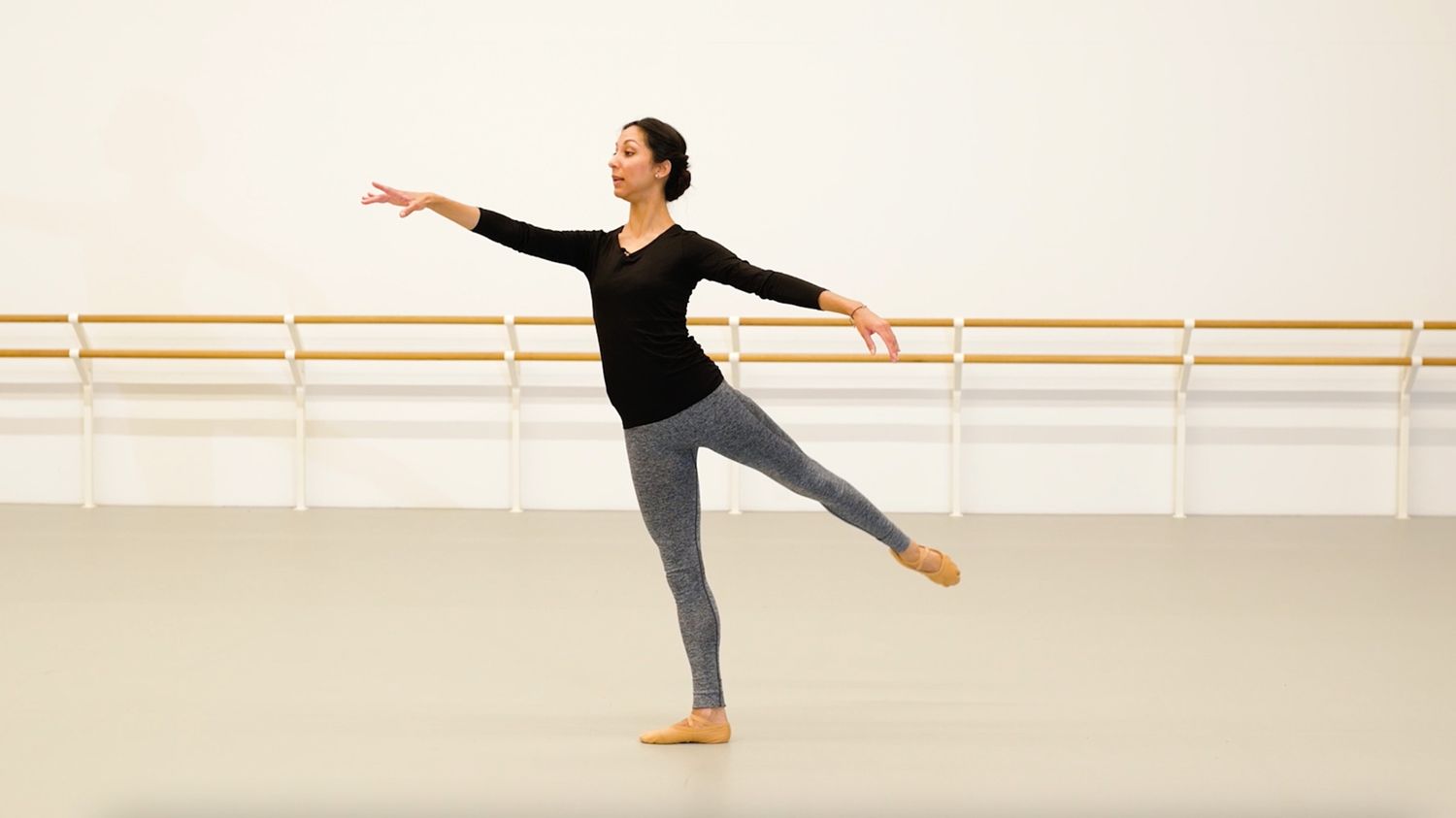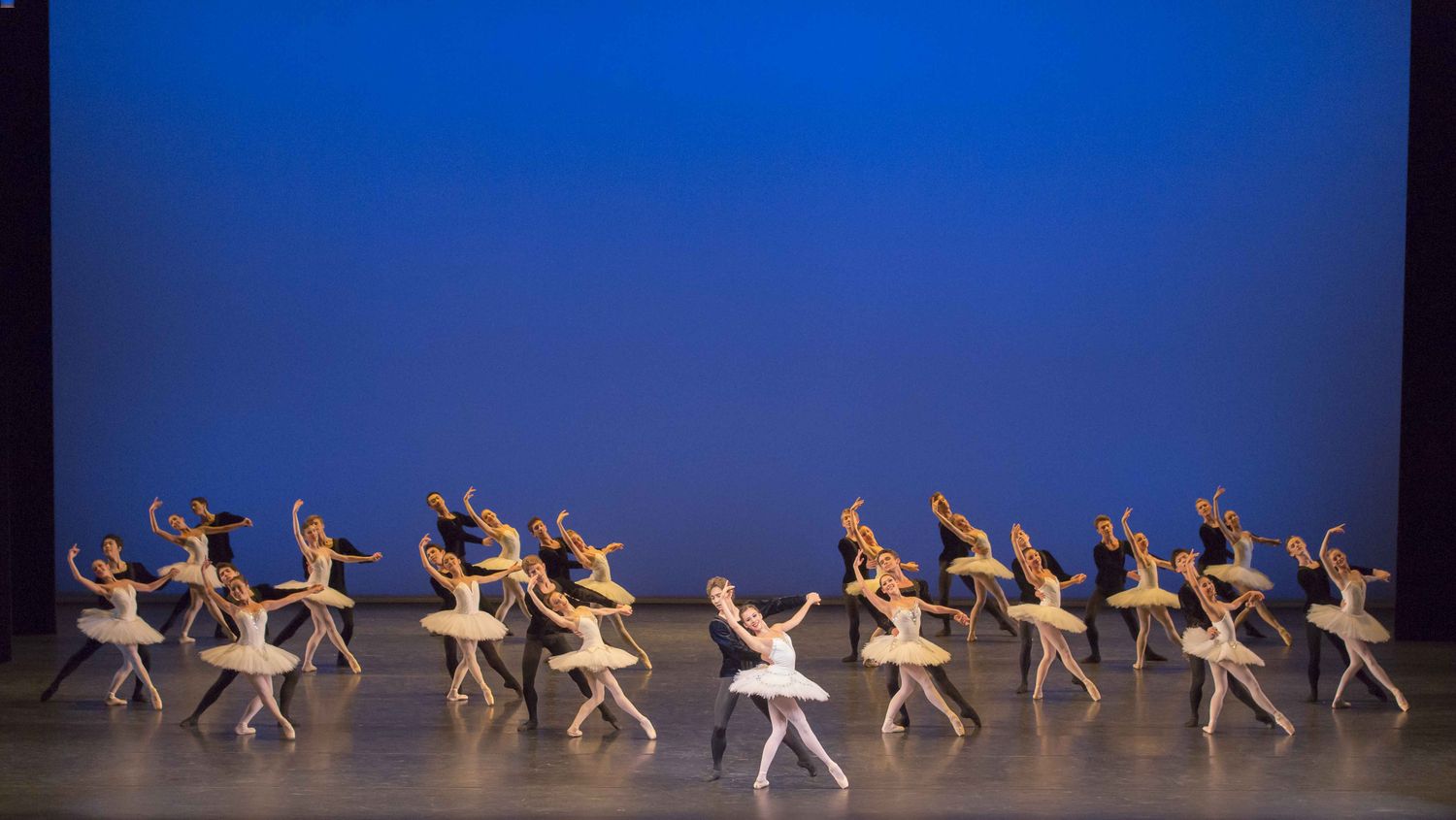Home>Events & Info>Ballet>What Is PBT Ballet
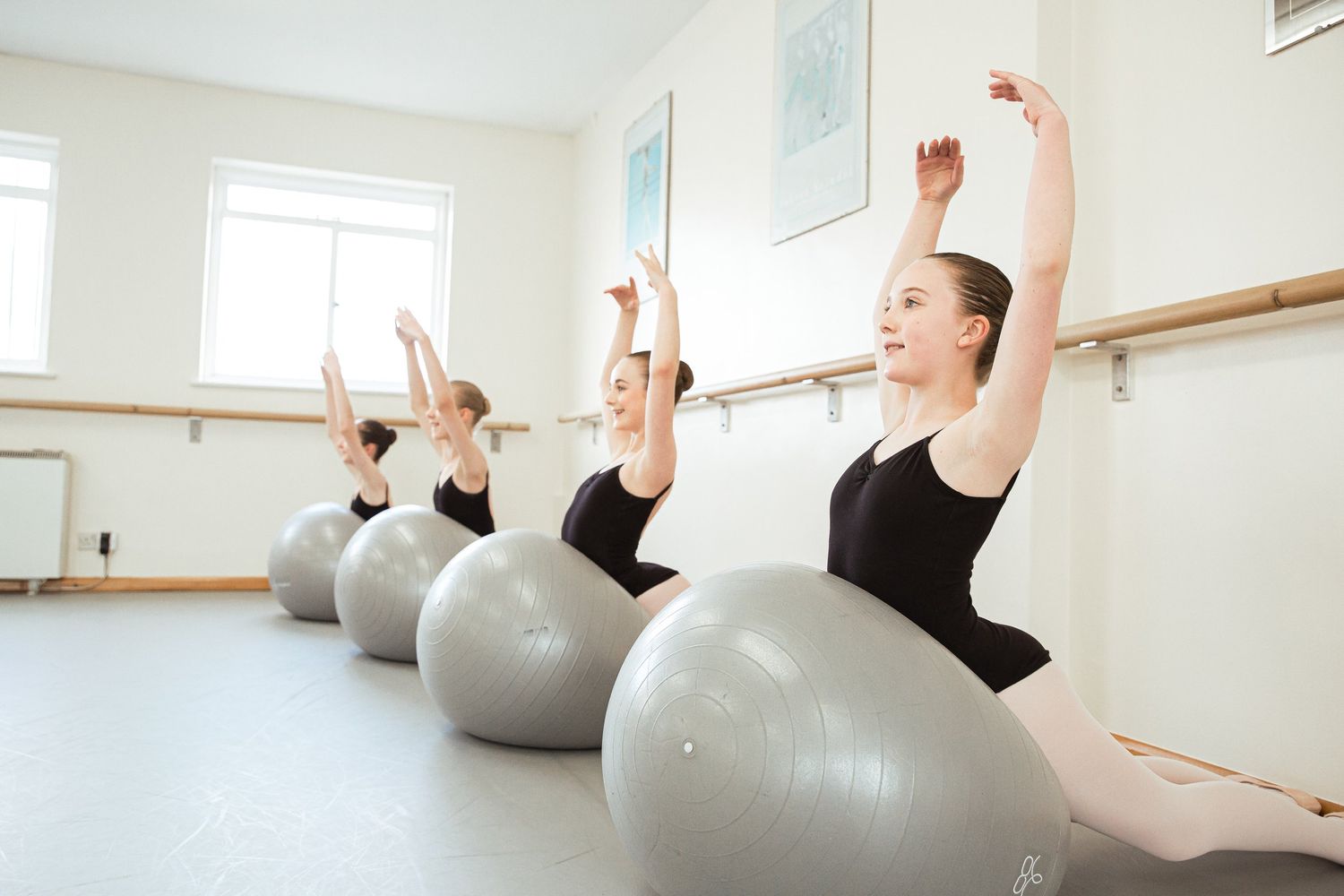

Ballet
What Is PBT Ballet
Modified: January 22, 2024
Discover the beauty and elegance of ballet with our comprehensive guide to PBT ballet. Perfect for beginners and enthusiasts alike, delve into the world of this timeless art form.
(Many of the links in this article redirect to a specific reviewed product. Your purchase of these products through affiliate links helps to generate commission for AudioLover.com, at no extra cost. Learn more)
Table of Contents
Introduction
When it comes to the art of dance, ballet has long held a special place in our hearts. Its grace, precision, and beauty captivate audiences around the world. But within the world of ballet, there are different techniques and styles that showcase unique approaches to movement and training. One such style is PBT Ballet.
PBT Ballet, short for Progressing Ballet Technique, is a training system designed to enhance a dancer’s technique and artistry. It focuses on building strength, flexibility, and control through specific exercises and movements. PBT Ballet has gained popularity in recent years for its innovative approach to dance training and the numerous benefits it offers to dancers of all levels.
In this article, we will dive deeper into the world of PBT Ballet, exploring its origins, techniques, and the advantages it provides to dancers. Whether you are a seasoned ballet aficionado or a curious newcomer, join us as we unravel the intricacies of this fascinating dance discipline.
Definition of PBT Ballet
PBT Ballet, or Progressing Ballet Technique, is a unique training system that combines ballet technique with specific exercises to improve a dancer’s strength, control, and overall performance. Developed by Marie Walton-Mahon, an experienced ballet teacher and former professional dancer, PBT Ballet focuses on developing a solid foundation of technique and muscular engagement.
Unlike traditional ballet training, PBT Ballet incorporates the use of props, such as fit balls and therabands, to target specific muscle groups and enhance body awareness. These props provide resistance and support, allowing dancers to isolate and strengthen the muscles required for correct ballet technique. Through consistent practice of PBT Ballet exercises, dancers develop greater muscular control, improved alignment, and increased flexibility.
One of the key principles of PBT Ballet is the concept of muscle memory. By repeatedly performing the exercises and movements, dancers train their muscles to memorize the correct placement and alignment. This enables dancers to execute ballet steps with precision, fluidity, and a reduced risk of injuries. The emphasis on muscle memory in PBT Ballet is particularly beneficial for young dancers who are still developing their technical skills.
Furthermore, PBT Ballet places a strong emphasis on correct alignment and posture. Dancers are taught to maintain a neutral pelvis, engage their core muscles, and align their body correctly to achieve optimum balance and stability. This attention to proper alignment not only improves the aesthetics of a dancer’s movements but also contributes to injury prevention and overall body awareness.
In essence, PBT Ballet is a comprehensive training system that combines traditional ballet technique with innovative exercises, prop utilization, and a focus on muscle memory and alignment. It has revolutionized the way dancers approach their training by redefining the boundaries of technique and maximizing the potential for growth and development.
Origins and History of PBT Ballet
The origins of PBT Ballet can be traced back to Marie Walton-Mahon, an esteemed ballet teacher and former professional dancer from Australia. After experiencing a career-ending injury, Walton-Mahon turned her focus to teaching and began exploring new methods to help dancers enhance their technique and prevent injuries.
In the early 2000s, Walton-Mahon developed the Progressing Ballet Technique, drawing inspiration from her own experiences as a dancer and her extensive knowledge of anatomy. She sought to create a training system that would address common technical challenges faced by dancers, such as lack of strength, flexibility, and muscle engagement.
Through her research and experimentation, Walton-Mahon discovered the benefits of incorporating props into ballet training. She found that props, such as fit balls and therabands, could be used to target specific muscle groups, improve alignment, and facilitate a deeper understanding of correct movement patterns.
Recognizing the potential of her new training approach, Walton-Mahon started sharing her methods with other dancers, teachers, and studios. The response was overwhelmingly positive, and PBT Ballet quickly gained traction within the ballet community.
Today, PBT Ballet is taught and practiced in dance schools and studios worldwide. It has become an essential component of many ballet training programs, helping dancers of all ages and levels to refine their technique, strengthen their bodies, and unlock their full potential.
The evolution of PBT Ballet is an ongoing process. Marie Walton-Mahon continues to refine and expand her training system, incorporating new exercises and techniques to provide dancers with the most effective tools for their development. She also conducts workshops and teacher certification programs, ensuring that PBT Ballet can be shared and passed on to future generations of dancers and instructors.
Overall, the history of PBT Ballet is a testament to the dedication and innovation of Marie Walton-Mahon. Through her passion for dance and her commitment to supporting dancers’ progress, she has made a significant impact on the ballet community and reshaped the way we approach ballet training.
Technique and Training in PBT Ballet
PBT Ballet incorporates a unique blend of traditional ballet technique and specialized exercises using props to enhance strength, flexibility, and body awareness. The training methodology focuses on building a solid foundation of technique while targeting specific muscle groups essential for ballet movements.
One of the core aspects of PBT Ballet is the utilization of props like fit balls, therabands, and foam rollers. These props provide resistance, support, and feedback, enabling dancers to isolate and engage specific muscle groups with precision. For example, the fit ball can be used to develop core strength and balance, while therabands assist in activating and strengthening muscles used in turnout and foot articulation.
Training in PBT Ballet typically begins with exercises that establish core stability and alignment. Dancers learn to engage their deep abdominal muscles to support their movements and maintain proper posture. Correct alignment is emphasized throughout each exercise, helping dancers to develop body awareness and balance.
As dancers progress, PBT Ballet incorporates exercises that target specific areas of the body, such as the legs, feet, and back. These exercises aim to strengthen and lengthen the muscles, improving extension, flexibility, and control. The rhythmic and repetitive nature of these exercises helps develop muscle memory, ensuring that correct technique is consistently ingrained.
PBT Ballet training is often incorporated into regular ballet classes, either as a standalone component or as part of the warm-up or cool-down routine. It complements traditional ballet training by providing dancers with additional tools to improve their technique and performance.
An important aspect of PBT Ballet is the emphasis on progression and gradual development. Dancers are encouraged to start with exercises that suit their current level of strength and flexibility. As they become more proficient, they can gradually advance to more challenging exercises. This approach allows dancers to build a strong foundation and avoid injury.
In addition to the physical aspects of technique and training, PBT Ballet also promotes a positive mindset and a sense of joy in dancing. By incorporating innovative and engaging exercises, it encourages dancers to explore their movements and express themselves artistically.
Overall, PBT Ballet offers a comprehensive and effective training method that enhances dancers’ technique, strength, and artistry. By combining traditional ballet principles with specialized exercises, dancers can improve their overall performance and unlock their full potential.
Benefits of PBT Ballet
PBT Ballet offers a wide range of benefits for dancers of all ages and levels. The unique training system focuses on developing strength, flexibility, control, and body awareness, which are essential elements for achieving success in ballet and other dance styles.
Here are some key benefits of PBT Ballet:
- Improved Technique: PBT Ballet’s emphasis on correct alignment, muscle engagement, and repetition helps dancers refine their technique. By developing a strong foundation, dancers can execute ballet movements with precision, fluidity, and control.
- Increased Strength and Flexibility: The specific exercises and props used in PBT Ballet target and strengthen different muscle groups, including the core, legs, and feet. This leads to increased overall strength, improved flexibility, and enhanced extension.
- Enhanced Body Awareness: PBT Ballet encourages dancers to develop a deep understanding of their body’s movements and alignment. Through the use of props and focused exercises, dancers become more aware of their muscles, posture, and placement, leading to improved body control and balance.
- Injury Prevention: By training specific muscle groups and emphasizing proper alignment, PBT Ballet helps reduce the risk of injuries. The focus on muscle memory and building strength in a controlled manner ensures that dancers develop a solid foundation to support their movements.
- Improved Overall Performance: PBT Ballet’s comprehensive approach to training enhances a dancer’s technical skills, artistry, and performance quality. Dancers become more expressive, versatile, and confident in their abilities, which translates to an enhanced overall performance.
- Supplement to Traditional Ballet Training: PBT Ballet can be seamlessly integrated into traditional ballet training. It provides dancers with additional tools to enhance their technique, strength, and flexibility, supplementing and elevating their regular ballet classes.
- Accessible to All Levels: Whether you are a beginner or an advanced dancer, PBT Ballet offers exercises and progressions suitable for all levels. Dancers can start at their own level and gradually advance, ensuring a safe and effective training experience.
These are just a few of the many benefits that PBT Ballet provides. By incorporating innovative techniques, targeted exercises, and a focus on holistic development, PBT Ballet transforms dancers into well-rounded performers who can excel in the demanding world of ballet and beyond.
PBT Ballet vs. Traditional Ballet
While both PBT Ballet and traditional ballet share a common foundation, there are distinct differences between the two training approaches. Understanding the nuances of each style can help dancers and instructors make informed choices about which method best suits their needs and goals.
Here are some key differences between PBT Ballet and traditional ballet:
- Training Methodology: Traditional ballet training primarily focuses on mastering the classical ballet technique through a structured curriculum. PBT Ballet, on the other hand, incorporates innovative exercises and the use of props to target specific muscle groups and enhance body awareness.
- Focus on Muscle Memory: PBT Ballet places a significant emphasis on developing muscle memory through repetition. By consistently practicing specific exercises, dancers train their muscles to memorize correct technique, resulting in better execution of movements. Traditional ballet also emphasizes muscle memory but typically through repetitive practice in a more traditional class setting.
- Use of Props: PBT Ballet uniquely incorporates the use of props like fit balls, therabands, and foam rollers to assist in the execution of exercises. These props provide resistance and support, aiding in muscle activation, flexibility, and alignment. Traditional ballet training typically does not utilize props in the same way.
- Focus on Body Alignment: PBT Ballet places a strong emphasis on correct alignment, posture, and core engagement. Dancers are trained to maintain a neutral pelvis, engage their core muscles, and align their body correctly to achieve optimal balance and stability. While traditional ballet also emphasizes alignment, PBT Ballet provides specific exercises and cues to help dancers grasp and apply proper alignment principles.
- Dynamic and Engaging: PBT Ballet incorporates a variety of dynamic and engaging exercises that aim to keep dancers motivated and challenged. The use of props, rhythmic movements, and inventive exercises adds an element of excitement and creativity to the training experience. Traditional ballet classes may follow a more structured format, focusing on technique and choreography.
- Individualized Progression: PBT Ballet allows dancers to progress at their own pace, starting with exercises that match their current level of strength and flexibility. As dancers improve, they can gradually advance to more challenging exercises. Traditional ballet training follows a more standardized progression based on syllabus levels.
It’s important to note that PBT Ballet and traditional ballet are not mutually exclusive. In fact, they can complement each other effectively. Many dancers benefit from incorporating PBT Ballet exercises into their regular ballet training, as it provides additional tools to improve technique, strength, and flexibility.
Ultimately, whether a dancer chooses PBT Ballet, traditional ballet, or a combination of both depends on personal goals, preferences, and the guidance of their instructors. Both methods offer valuable insights and techniques that contribute to a well-rounded dance education.
Examples of Famous PBT Ballet Performances
Since its inception, PBT Ballet has made a significant impact on the world of dance, inspiring remarkable performances by dancers who have incorporated its training methodology into their practice. Here are a few examples of famous PBT Ballet performances:
- Martha Graham Dance Company: The Martha Graham Dance Company is known for its groundbreaking contributions to contemporary dance. Many of the company’s dancers have relied on PBT Ballet training to enhance their technique and performance quality, resulting in captivating and powerful performances that showcase the integration of PBT Ballet principles with the Graham technique.
- Birmingham Royal Ballet: The Birmingham Royal Ballet, based in the United Kingdom, has embraced PBT Ballet as part of its training approach. Dancers from this esteemed company have demonstrated the benefits of PBT Ballet through their exceptional technique and fluid movements. Their performances have showcased a seamless fusion of traditional ballet and PBT Ballet principles, captivating audiences worldwide.
- Alonzo King LINES Ballet: Alonzo King LINES Ballet, a contemporary ballet company based in San Francisco, has incorporated PBT Ballet into its training regimen. The dancers of LINES Ballet have utilized PBT Ballet techniques to enhance their strength, control, and body awareness, resulting in breathtaking performances that blend technical precision with expressive artistry.
- Australian Ballet: As the birthplace of PBT Ballet, it’s no surprise that the Australian Ballet has embraced this training system. Dancers from the Australian Ballet have seamlessly integrated PBT Ballet principles into their performances, showcasing the benefits of enhanced strength, flexibility, and artistry that PBT Ballet brings. Their performances exhibit the captivating beauty and technical excellence that have become synonymous with Australian ballet.
- Paris Opera Ballet: The Paris Opera Ballet, one of the oldest and most prestigious ballet companies in the world, has recognized the value of PBT Ballet in their training. Dancers from this esteemed company have integrated PBT Ballet techniques into their practice, delivering performances that exhibit the synergy between traditional ballet and the innovation of PBT Ballet.
These are just a few notable examples of famous PBT Ballet performances. Many other dance companies and individual dancers have embraced PBT Ballet as a valuable training and performance tool, showcasing the power of this innovative approach to ballet.
Through their exceptional performances, these dancers have demonstrated the transformative effects of PBT Ballet, captivating audiences with their technical precision, expressive artistry, and the seamless integration of traditional ballet with PBT Ballet principles.
Conclusion
PBT Ballet, or Progressing Ballet Technique, has revolutionized the world of ballet training by incorporating innovative exercises, the use of props, and a focus on muscle memory and correct alignment. Developed by Marie Walton-Mahon, PBT Ballet offers a comprehensive approach to dance education, providing dancers with the tools to enhance their technique, strength, flexibility, and overall performance.
Throughout this article, we have explored the definition, history, technique, and benefits of PBT Ballet. We’ve also highlighted examples of famous PBT Ballet performances, showcasing the impact and integration of this training system within the dance world.
PBT Ballet not only enhances a dancer’s physical abilities but also promotes a deeper understanding of the body, body awareness, and artistic expression. It provides a platform for growth, allowing dancers to reach their full potential by refining their technique, preventing injuries, and bolstering their performance quality.
While PBT Ballet offers a unique approach to ballet training, it is important to note that it can be seamlessly integrated into traditional ballet practices. The incorporation of PBT Ballet exercises and principles can supplement and enhance a dancer’s training, resulting in a more well-rounded and versatile dancer.
As PBT Ballet continues to gain recognition and popularity, it is inspiring dancers and instructors worldwide to explore new avenues of training and performance. Its emphasis on technique, strength, and artistry has had a profound impact on the dance community, pushing the boundaries of what is possible within the world of ballet.
Whether you are a professional dancer, an aspiring ballet student, or simply a ballet enthusiast, embracing PBT Ballet can open up new horizons for your dance journey. By incorporating the principles of PBT Ballet into your training, you can unlock your full potential, develop a strong technical foundation, and elevate your performance to new heights.
So, let the beauty and innovation of PBT Ballet inspire you as you embark on your own dance adventure, and may your journey be filled with grace, passion, and the joy of movement.


